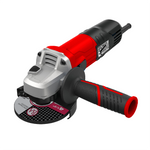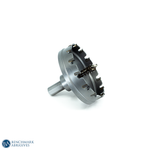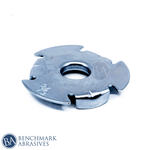
Types of Metal Cutting Tools

The fundamental purpose of metal cutting in manufacturing and fabrication is to shape a workpiece by removing material until it reaches the desired dimensions. From rough cutting to precision finishing, a wide array of tools and machines is used. These tools can be broadly categorized into three groups: hand tools, cutting bits, and machine tools.
Understanding the purpose and application of each is essential for any metalworking project.
1. Hand Tools for Cutting Metal
These tools are operated manually and are ideal for smaller projects, making precise cuts or working in situations where portability is key.
- Hacksaw: A versatile tool with a fine-toothed blade stretched across a frame, perfect for cutting metal pipes, rods, and thin sheets. The blades are replaceable and come in various teeth-per-inch (TPI) counts to suit different materials.
- Tin Snips: Function like heavy-duty scissors, specifically designed to cut thin-gauge sheet metal, gutters, and other similar materials.
- Bolt Cutters: Powerful tools that use a compound leverage mechanism to cut through thick, soft metals like bolts, chains, and padlocks.
- Hand Nibblers: Specialized tools for cutting intricate shapes and curves in sheet metal by punching out small, overlapping pieces of material.
- Rotary Tools: Small, handheld tools that spin a variety of attachments (bits) at high speed. They are used for carving, cutting, reaming, deburring, and other detail work.
Related - Types of Hacksaw Blades
2. Cutting Bits (Single-Point and Multi-Point)
Defined by their number of cutting edges, these are the tools that attach to a machine or drill for cutting purposes.
- Single-Point Tools: These tools have one primary cutting edge and are used for continuous cutting in processes like turning, shaping, and planing.
- Multi-Point Tools: These tools have multiple cutting edges and are used in processes like drilling, milling, and grinding, where they remove material with each rotation.
Here are some common types of cutting bits:
- Drills: A primary multi-point tool for creating round holes. It rotates to create a hole that is the same diameter as the bit.
- Reamer: A rotary tool designed to enlarge a previously drilled hole to a more precise size and improve its surface finish.
- Cutting Taps: Used to create internal threads in a pre-drilled hole, allowing screws or bolts to be fastened.
Punches: A hard, sharp-tipped metal rod struck with a hammer to create a hole or indent in metal.
Types of Cutting Tools in Workshop

3. Machine Tools for Cutting Metal
Using a cutting tool or holding a workpiece, machine tools are power-driven machines that perform precise cutting, shaping, and forming operations.
- Lathe: A lathe is a tool that spins a piece of material on an axis, allowing a stationary cutting tool to shape it.
- Drill Press: A stationary machine with a suspended drill that bores precision holes. It operates on a fixed vertical axis, ensuring holes are perfectly straight and perpendicular to the workpiece.
- Milling Machine: A milling machine shapes a stationary workpiece using a rotating cutting tool for operations like drilling and contouring. CNC machines are used to automate this versatile process.
- Grinder: A machine that uses a spinning abrasive disc to grind, shape, and cut materials. Handheld versions offer portability, while stationary grinders are used for sharpening tools and removing burrs.
- Chop Saw: A rough, stationary cutter with a spinning abrasive or sharpened blade that cuts material to length in a chopping motion. It is used for quick, straight cuts on metal stock.
- Welder: Although primarily a joining tool, welders can also be used as a cutting tool. The high-heat arc can melt and cut through thick materials, though this often results in a rough or dirty edge.
Conclusion
Metal cutting tools offer a diverse and expansive range of options, whether you need the powerful precision of a CNC mill or the direct control of a hacksaw. By understanding the function of each tool, you can select the right equipment for the job, ensuring safety, efficiency, and a professional result in any metalworking application.



































































